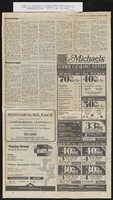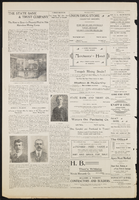Search the Special Collections and Archives Portal
Search Results

Meeting minutes for Consolidated Student Senate, University of Nevada, Las Vegas, March 25, 1980
Date
1980-03-25
Archival Collection
Description
Includes meeting agenda and minutes. CSUN Session 9 Meeting Minutes and Agendas.
Text

Meeting minutes for Consolidated Student Senate, University of Nevada, Las Vegas, September 01, 1981
Date
1981-09-01
Archival Collection
Description
Includes meeting agenda and minutes along with additional information about the memorandum and aquarian earth fair. CSUN Session 11 Meeting Minutes and Agendas.
Text

Meeting minutes for Consolidated Student Senate, University of Nevada, Las Vegas, June 01, 1982
Date
1982-06-01
Archival Collection
Description
Includes meeting agenda and minutes. CSUN Session 12 Meeting Minutes and Agendas.
Text

Laura Gentry interview, February 26, 1977: transcript
Date
1977-02-26
Archival Collection
Description
On February 26, 1977, collector Harold May interviewed Laura Gentry (born May 1897 in St. Thomas, Nevada) at her cabin in Gold Butte, Nevada. In this interview, Laura Gentry discusses living in St. Thomas and Overton, Nevada. She discusses the development of the Overton and Gold Butte areas of Nevada as well as the people involved in mining in these areas.
Text

Interview with Donald E. English, March 25, 2004
Date
2004-03-25
Archival Collection
Description
Narrator affiliation: Photographer, Las Vegas News Bureau
Text

University of Nevada, Las Vegas (UNLV) Spring 2017 commencement program
Date
2017-05-13
Archival Collection
Description
Commencement program from University of Nevada, Las Vegas Commencement Programs and Graduation Lists (UA-00115).
Text
Pagination
Refine my results
Content Type
Creator or Contributor
Subject
Archival Collection
Digital Project
Resource Type
Year
Material Type
Place
Language
Records Classification




